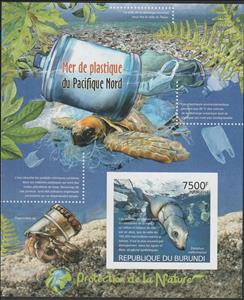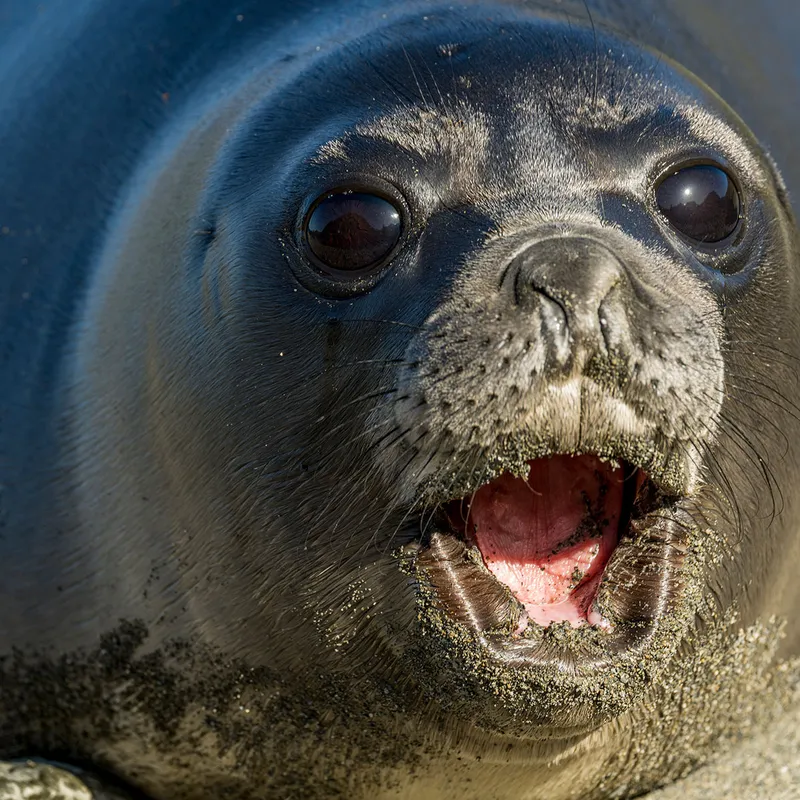Souvenir Sheet: Sea Lion (Zalophus Californianus) Ensnared in Net (Burundi 2012)
Sea Lion (Zalophus Californianus) Ensnared in Net (Burundi 2012)
31 August (Burundi ) within release Pollution: Plastic in the Oceans goes into circulation Souvenir Sheet Sea Lion (Zalophus Californianus) Ensnared in Net face value 7,500 Burundian franc
| Souvenir Sheet Sea Lion (Zalophus Californianus) Ensnared in Net in catalogues | |
|---|---|
| Belgium: | Bel: BI BL322ND |
Souvenir Sheet is square format.
Also in the issue Pollution: Plastic in the Oceans:
- Souvenir Sheet - Zalophus Californianus Ensnared in Net face value 7,500;
- Mini Sheet - Pollution: Plastic in the Oceans face value 8,140;
- Stamp - Pollution: Plastic in the Oceans face value 1,070;
- Stamp - Pollution: Plastic in the Oceans face value 3,000;
- Stamp - Pollution: Plastic in the Oceans face value 1,070;
- Stamp - Pollution: Plastic in the Oceans face value 3,000;
- Stamp - Pollution: Plastic in the Oceans face value 7,500;
- Mini Sheet - Pollution: Plastic in the Oceans face value 8,140;
- Souvenir Sheet - Sea Lion (Zalophus Californianus) Ensnared in Net face value 7,500;
Souvenir Sheet Sea Lion (Zalophus Californianus) Ensnared in Net it reflects the thematic directions:
Animals are multicellular, eukaryotic organisms of the kingdom Animalia (also called Metazoa). All animals are motile, meaning they can move spontaneously and independently, at some point in their lives. Their body plan eventually becomes fixed as they develop, although some undergo a process of metamorphosis later on in their lives. All animals are heterotrophs: they must ingest other organisms or their products for sustenance.
Environmental protection is the practice of protecting the natural environment by individuals, groups and governments.Its objectives are to conserve natural resources and the existing natural environment and, where it is possible, to repair damage and reverse trends.
Marine life, or sea life or ocean life, refers to the plants, animals and other organisms that live in the salt water of the sea or ocean, or the brackish water of coastal estuaries. At a fundamental level, marine life helps determine the very nature of our planet. Marine organisms produce much of the oxygen we breathe. Shorelines are in part shaped and protected by marine life, and some marine organisms even help create new land. Altogether there are 230,000 documented marine species, including over 16,000 species of fish, and it has been estimated that nearly two million marine species are yet to be documented. Marine species range in size from the microscopic, including plankton and phytoplankton which can be as small as 0.02 micrometres, to huge cetaceans (whales, dolphins and porpoises) which in the case of the blue whale reach up to 33 metres (109 feet) in length, being the largest known animal.
Pinnipeds (pronounced /ˈpɪnɪˌpɛdz/), commonly known as seals, are a widely distributed and diverse clade of carnivorous, fin-footed, semiaquatic, mostly marine mammals. They comprise the extant families Odobenidae (whose only living member is the walrus), Otariidae (the eared seals: sea lions and fur seals), and Phocidae (the earless seals, or true seals), with 34 extant species and more than 50 extinct species described from fossils. While seals were historically thought to have descended from two ancestral lines, molecular evidence supports them as a monophyletic group (descended from one ancestor). Pinnipeds belong to the suborder Caniformia of the order Carnivora; their closest living relatives are musteloids (weasels, raccoons, skunks and red pandas), having diverged about 50 million years ago.




